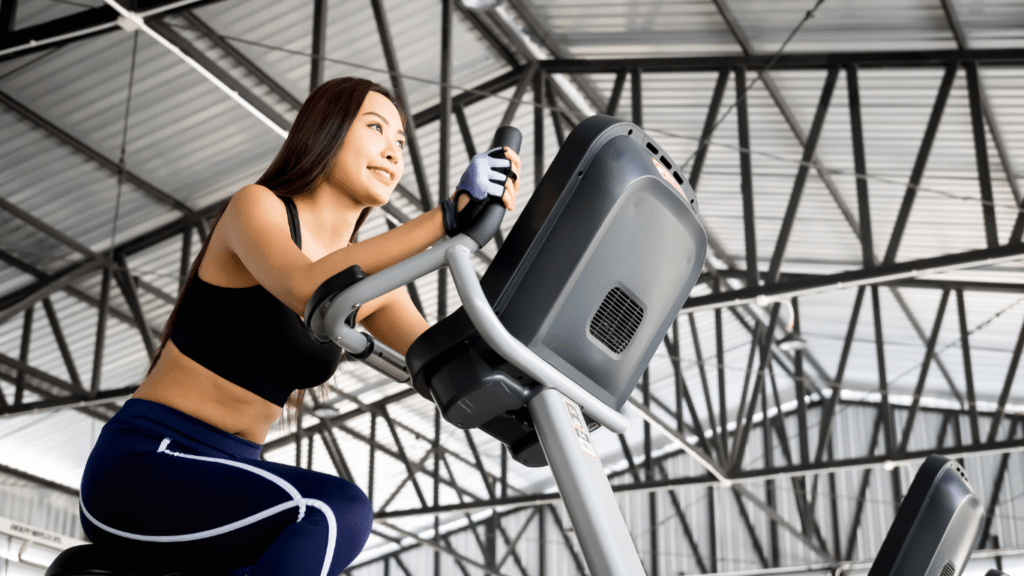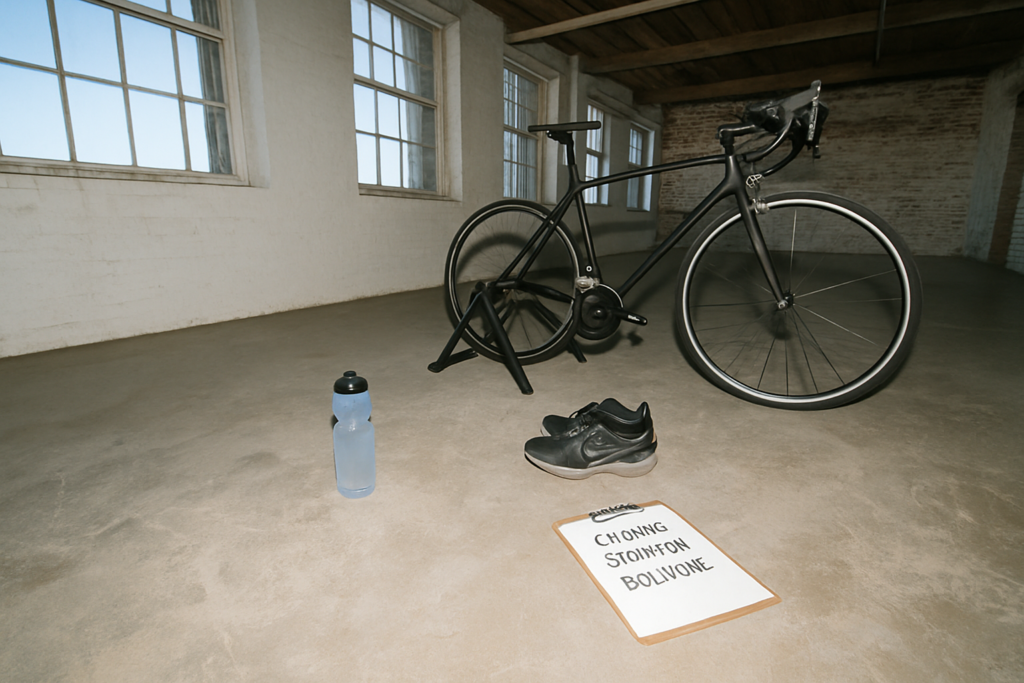The Benefits of Using Indoor Trainers for Cycling
Using indoor trainers for cycling offers several key benefits that help maintain fitness levels year-round.
Stay Fit Regardless of Weather
Indoor trainers enable consistent training regardless of weather conditions, ensuring fitness levels don’t drop during winter or rainy seasons.
They provide a controlled environment, so I can stick to my planned workouts without worrying about external factors like rain or extreme temperatures.
This consistency helps in maintaining, and even improving, endurance and strength levels over time.
Increase Riding Consistency
Indoor trainers improve riding consistency by eliminating barriers to regular workouts. There’s no need to plan around daylight or commute to a specific location to ride, which saves both time and effort.
This convenience makes it easier to establish and adhere to a regular training schedule.
Additionally, I can use structured training programs available on various platforms to maintain motivation and focus on specific fitness goals.
Choosing the Right Indoor Trainer
Choosing the right indoor trainer is crucial for maintaining effective year-round cycling fitness. Selecting an appropriate trainer ensures that workouts remain engaging and beneficial.
Types of Indoor Trainers
Differentiating between types of indoor trainers helps identify the best option for individual needs.
- Wheel-On Trainers: Attach the bike’s rear wheel directly to the trainer. They are affordable and easy to set up but may offer less precision and stability compared to other types.
- Direct-Drive Trainers: Replace the bike’s rear wheel with the trainer, providing greater accuracy and a smoother ride. They tend to be more expensive but deliver better performance and quieter operation.
- Roller Trainers: Consist of a set of rolling cylinders that the bike sits on. They develop balance and bike handling skills while offering a realistic road feel but demand more practice and skill.
- Smart Trainers: Feature built-in technology to connect with training apps, enabling interactive and customized workouts. They often come in both wheel-on and direct-drive formats, providing various price points and features.
Key Features to Consider
Examining key features ensures that the chosen trainer aligns with training goals and preferences.
- Resistance Type: Look at magnetic, fluid, and electromagnetic resistance for varying levels of smoothness and adjustability. Magnetic and fluid types offer progressive resistance, while electromagnetic types provide precise control through apps.
- Connectivity: Evaluate compatibility with popular cycling apps like Zwift, TrainerRoad, and Sufferfest. This ensures a seamless integration and maximizes workout effectiveness through interactive elements.
- Noise Level: Consider the noise created during operation. Indoor trainers can be noisy, especially in confined spaces. Opt for quieter models, particularly direct-drive or fluid-based trainers, to avoid disturbing others.
- Stability and Build Quality: Ensure the trainer provides a stable platform during intense sessions. High-quality materials and a solid build reduce wear and increase longevity.
- Portability and Storage: Check if the trainer is easy to fold and store when not in use. Compact designs facilitate convenient usage in smaller spaces or for those who need to travel with their trainer.
By carefully considering these factors, cyclists can choose the ideal indoor trainer that provides effective, enjoyable, and productive workouts all year long.
Setting Up Your Indoor Cycling Space

Creating a dedicated indoor cycling space enhances the effectiveness and enjoyment of your workouts. An optimized setup promotes consistency and helps keep you engaged.
Equipment Essentials
Having the right equipment ensures smooth and effective training sessions:
- Indoor Trainer: Choose from Wheel-On, Direct-Drive, or Roller trainers, based on personal preferences and specific needs. Smart trainers connect to training apps for interactive sessions.
- Bicycle: Ensure your bike is compatible with the chosen trainer. Road bikes and hybrid bikes often work best for stationary setups.
- Trainer Mat: Place a mat under the trainer. It protects flooring and reduces noise.
- Fan: Use a fan to regulate body temperature during intense workouts.
- Towel and Water Bottle: Keep these within reach to stay hydrated and manage sweat.
Optimizing Your Environment
A well-thought-out environment enhances focus and performance:
- Space: Choose a quiet, well-ventilated area with enough space to accommodate the trainer and bike. Avoid clutter that may cause distractions or accidents.
- Lighting: Ensure good lighting, preferably natural, to keep the space inviting and energizing.
- Entertainment: Consider setting up a screen for watching training videos or listening to music. This keeps workouts engaging and prevents monotony.
- Storage: Organize the area to store accessories like shoes, gloves, and maintenance tools. Keeping essentials within reach minimizes interruptions during workouts.
- Connectivity: Ensure a strong Wi-Fi connection if using smart trainers or training apps. Reliable connectivity enables seamless interaction with virtual training environments and communities.
Training Programs and Apps
Indoor trainers offer versatile training programs and apps to enhance cycling fitness year-round.
Structured Workouts
Many apps provide structured workouts that cater to varied fitness levels. Platforms like TrainerRoad and TrainingPeaks offer goal-specific routines, including endurance, power, and interval sessions.
These programs guide cyclists through scientifically-backed plans, ensuring effective training.
For example, TrainerRoad assigns specific wattage targets based on FTP (Functional Threshold Power), making each session efficient and personalized.
Virtual Riding Experiences
Virtual riding apps like Zwift and Rouvy simulate outdoor experiences. These apps feature virtual worlds where cyclists join group rides, races, or solo routes.
Zwift, for instance, offers courses mimicking real-world locations, providing an immersive experience. Rouvy includes augmented reality, blending real-life video with virtual elements.
These experiences add motivational aspects, engaging users through competitive and social interactions.
Both structured workouts and virtual experiences maximize the benefits of indoor training, ensuring cyclists maintain their fitness goals effectively and enjoyably.

 I’m Brendamee McCartyierr, and as the founder of Cycle Smooth Ride Long, I'm thrilled to bring you the ultimate resource for all things cycling. Whether you're a seasoned rider or just starting on your cycling journey, our mission is to support your passion for two wheels with trusted advice, insightful reviews, and expert tips.
Cycling is more than just a hobby—it's a lifestyle that promotes health, freedom, and adventure. At Cycle Smooth Ride Long, we’re committed to making your ride smoother, longer, and more enjoyable by providing you with the latest in cycling news, nutrition advice, fitness tips, and gear reviews. We also cater to beginners, offering comprehensive guides to help you get started and build confidence on the road.
I’m Brendamee McCartyierr, and as the founder of Cycle Smooth Ride Long, I'm thrilled to bring you the ultimate resource for all things cycling. Whether you're a seasoned rider or just starting on your cycling journey, our mission is to support your passion for two wheels with trusted advice, insightful reviews, and expert tips.
Cycling is more than just a hobby—it's a lifestyle that promotes health, freedom, and adventure. At Cycle Smooth Ride Long, we’re committed to making your ride smoother, longer, and more enjoyable by providing you with the latest in cycling news, nutrition advice, fitness tips, and gear reviews. We also cater to beginners, offering comprehensive guides to help you get started and build confidence on the road.
